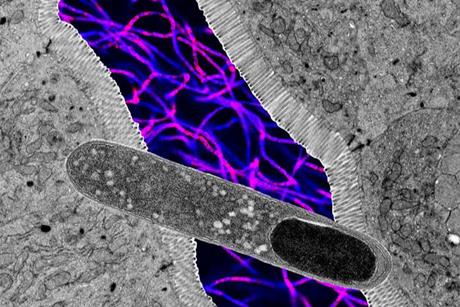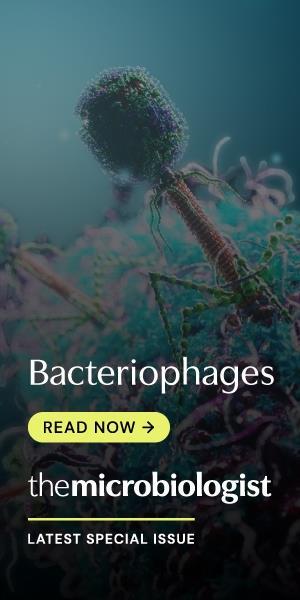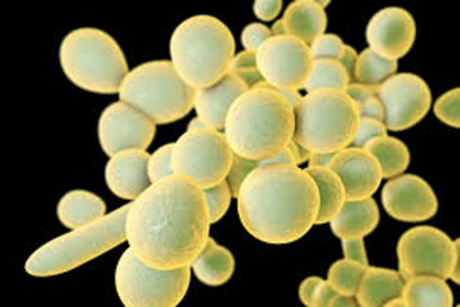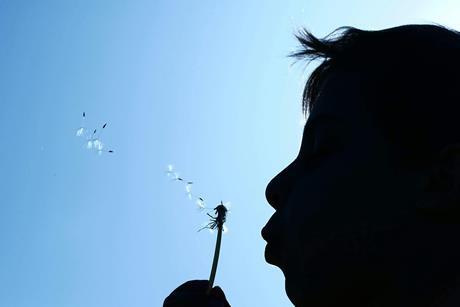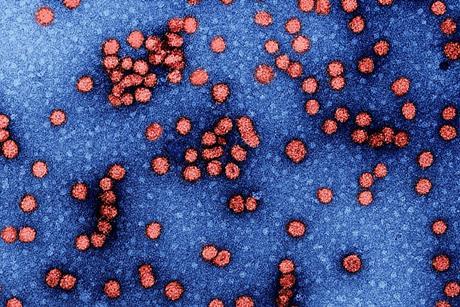Latest news
New antimalarial drug candidate shows potential for fighting resistance and reducing malaria transmission
Researchers have developed a new antimalarial drug candidate designed to address the growing challenge of drug resistance and potentially reduce malaria transmission.
The gut bacteria that put the brakes on weight gain in mice
Research has identified a specific type of gut bacteria, called Turicibacter, that improves metabolic health and reduces weight gain in mice on a high-fat diet. People with obesity tend to have less Turicibacter, suggesting that the microbe may promote healthy weight in humans as well.
Strengthening asphalt roads with a unique green ingredient: Algae
Researchers propose a figurative and literal green solution to improve the durability of roads and sidewalks: an algae-derived asphalt binder. For temperatures below freezing, results indicated that the algae binder reduced asphalt cracks when compared to a conventional, petroleum-based binder.
Harnessing the positive health benefits of microbes
A new article introduces the ‘Database of Salutogenic Potential’, a world-first prototype open-access repository that catalogues microbes and natural compounds linked to positive health outcomes.
Rising heat reshapes how microbes break down microplastics, new review finds
A new review examines how high and extreme temperatures influence the ability of microorganisms to degrade microplastics. The authors show that heat can both accelerate and suppress microbial breakdown of plastic particles, depending on conditions and the organisms involved.
A ‘one-pot’ assay of or rapid portable identification of genotypes I and II African swine fever viruses
Researchers in search of an African swine fever virus genotyping method developed an isothermal ‘one-pot’ CRISPR-Cas12i3/Cas13d-based assay, designated OBServe.v2, to detect two amplified targets from multiplex recombinase polymerase amplification (RPA) in a single tube.
The gut bacteria that put the brakes on weight gain in mice
Research has identified a specific type of gut bacteria, called Turicibacter, that improves metabolic health and reduces weight gain in mice on a high-fat diet. People with obesity tend to have less Turicibacter, suggesting that the microbe may promote healthy weight in humans as well.
Strengthening asphalt roads with a unique green ingredient: Algae
Researchers propose a figurative and literal green solution to improve the durability of roads and sidewalks: an algae-derived asphalt binder. For temperatures below freezing, results indicated that the algae binder reduced asphalt cracks when compared to a conventional, petroleum-based binder.
Harnessing the positive health benefits of microbes
A new article introduces the ‘Database of Salutogenic Potential’, a world-first prototype open-access repository that catalogues microbes and natural compounds linked to positive health outcomes.
Strategic advancement of second-generation fungal vaccine VXV-01 through Phase 1 trials
The Lundquist Institute (TLI) and its start-up company Vitalex Biosciences (Vitalex) have announced that the second-generation fungal vaccine candidate known as VXV‑01 is poised to move forward in development up to and including Phase 1 clinical evaluation.
CARB-X to support investigation of Exhalon’s breath-based lower respiratory tract infection testing platform
CARB-X has awarded Exhalon US$1M in seed funding to evaluate whether exhaled breath can be used as a non-invasive sample type to aid in the rapid and accurate diagnosis of lower-respiratory tract infections (LRTIs).
AFYREN and ESSE Skincare begin partnership to offer 100% natural cosmetic solutions with enhanced skincare performance
AFYREN, a greentech company offering manufacturers biobased, low-carbon ingredients through a unique fermentation technology, and South Africa-based Esse Skincare, a leader in microbiome skincare science, are partnering to introduce the world’s first bio-based propionic acid for the skincare industry.
New antimalarial drug candidate shows potential for fighting resistance and reducing malaria transmission
Researchers have developed a new antimalarial drug candidate designed to address the growing challenge of drug resistance and potentially reduce malaria transmission.
A ‘one-pot’ assay of or rapid portable identification of genotypes I and II African swine fever viruses
Researchers in search of an African swine fever virus genotyping method developed an isothermal ‘one-pot’ CRISPR-Cas12i3/Cas13d-based assay, designated OBServe.v2, to detect two amplified targets from multiplex recombinase polymerase amplification (RPA) in a single tube.
Breakthrough AI speeds up discovery of life-supporting microbes
Scientists have developed a powerful new artificial intelligence tool called LA⁴SR that can rapidly identify previously overlooked proteins in microalgae - tiny organisms that produce much of the Earth’s oxygen and support entire aquatic ecosystems.
Global Virus Network announces appointment of new board members
The Global Virus Network (GVN), a worldwide coalition of leading human and animal virologists, has announced the appointment of eight distinguished leaders to its Board of Directors.
How can nursing homes protect more patients from infections?
New US national guidance calls for full-time infection prevention staff; more training, support and vaccination for all staff; and partnerships with hospitals and public health agencies.
What are the new guidelines for infant hepatitis B vaccination?
Public health expert and infectious disease physician Janet A. Jokela comments after the Advisory Committee on Immunization Practices of the CDC voted to discontinue its decades-long recommendation for universal vaccination against hepatitis B beginning at birth.







